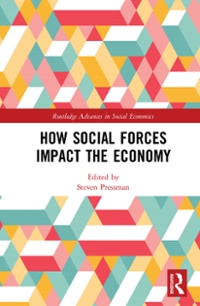Help in solving this problems.
1 Externalities Problem 1 Answer questions (a) and (b) for each of the following four examples: 1. Smoking by individuals; 2. Toxic waste production by firms; 3. R&D by a high-tech firm; and 4. Individual vaccination against communicable illness. (a) Is there an externality? If so, describe it, including references to whether it is positive or negative, and whether it is a consumption or production externality. (b) If there is an externality, does it seem likely that private markets will arise that allow this externality to be internalized? Why or why not? Problem 2 Brookhaven has two regions. In Stony Brook, the marginal benefit associated with pollution cleanup is AB - 300 - 100, while in Port Jefferson, the marginal benefit associated with pol- lution cleanup is MB - 200 - 40. Suppose that the marginal cost of cleanup is constant at $12 per unit. What is the optimal level of pollution cleanup in each of the two regions? Problem 3 The private marginal benefit associated with a product's consumption is PAD - 360 - 49 and the private marginal cost associated with its production is PAC - 60. Furthermore, the marginal external damage associated with this good's production is MD - 20. To correct the externality, the government decides to impose a tax of 7 per unit sold. What tax T should it set to achieve the social optimumn?(20 points) Suppose a rm has production function f (271, 172) : (min{3:v1, 2:132})1/2, and the price of each input is $1. (a) If 332 is fixed in the short run, find the rm's short-run cost function 05(y, :32). (b) Find the rm's longrun cost function C(y) (c) Find the rm's short-run supply function 33(p, :52) (d) Find the rm's longrun supply function 8(2)) 3. To slow down transmissions of the viral disea 'lockdown" hence ordering business to shut and the citizens to adhere to limiting physical distancing, but leaving the timing of the lockdown to be decided by the two regional governments of Krona. Assume that both regions have roughly the same population size of 10 million citizens. Region 1 entered lockdown at the beginning of month 3, region 2 entered lockdown at the beginning of month 2. See Next Page The following table shows the cumulative infections and fatalities due to the viral disease over time and the time of the lockdown in each region at the end of each month. Month 1 Month 2 Month 3 Month 4 cases fatalities cases fatalities cases fatalities cases fatalities Region 1 100 3 5000 300 9000 540 15000 900 Region 2 100 5 2200 130 4500 270 5500 330 a) The minister for the economy argues that after both regions entered lockdown, in month 3 the number of cases in region 2 more than doubled, whereas the growth rate is lower in region 1 arguing that the lockdown was not effective in preventing the spread of the disease. Do you agree? Can you provide a better estimate using your knowledge of empirical methods introduced in the module? [word limit 250 words; 8 marks]. b) What kind of data would you prefer to have to estimate the full impact of the lockdowns on infections and fatalities? Explain how this would help to improve your estimate from the previous question. [word limit 200 words; 4 marks]. c) In response to the lockdown the economy in region 1 contracted by $1.1bn, and $1.114bn in region 2. What can we learn from these figures about the statistical value of life? [word limit 100 words; 3 marks]. d) Suppose a vaccine against the disease was available at the beginning of month 1 (and assume it works immediately by protecting the citizens from the disease). 60% of population require the vaccine to stop the disease from spreading. The vaccine is available for $20. Should the government introduce the vaccine? State any assumptions you implicitly make underlying your advice and briefly discuss the limitation of your advice. [word limit 250 words; 5 marks].\fConsider market for masks. Not everyone values the mask equally: marginal private benet is 100 Q and marginal private costs are given by 20 (per Q). Given that wearing masks will help reduce spread of virus, marginal benet to others is 1130 = 50 (per Q). o 3.. Draw the marginal private benet (MPB) marginal social benet (MSB), marginal private cost (MPG), and marginal social cost (MSG) curves on a graph. labeling clearly the axes and intercepts. Pay close attention to what is on the Xiaxis and yiaxis. _ ' o b. What is the equilibrium amount of masks? What is the eicient level? 0 c. What is the deadweight loss (D'WL) caused by the externality? Shade in the area. of the DWL on the graph from part (a). What is the welfare gain from moving to the efcient level of Q? o d. For which good is a market absent in this case? Government solution: Suppose the government steps in and decides to correct the externality by subsi dizing masks. o e. Suggest a Pigouvian tax that would induce the efcient consumption. What is the optimal tax rate per unit, and how much subsidy is needed? Market solution: The Cease theorem states that \"the eicient outcome should occur regardless of which party has the property rights,\" implying that the market can potentially solve externalities by itself (no need for the government to step inl). o f. Interpret the Cease theorem in the context of this question. What are ways in which the Cease theorem could fail? Give some examples in the context of this











